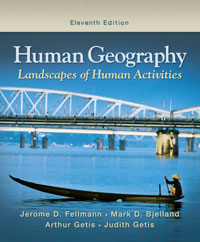1.
A) True B) False 2.
A) Hipparchus B) Strabo C) Ptolemy D) Eratosthenes 3.
A) site B) situation C) absolute distance D) hierarchical diffusion 4.
A) absolute B) relative C) multi-directional D) culturally dependent 5.
A) absolute B) relative C) large scale D) geographic 6.
A) linear B) relative C) psychological D) imagined 7.
A) True B) False 8.
A) location B) distance C) connectivity D) accessibility 9.
A) True B) False 10.
A) True B) False 11.
A) pattern B) dispersion C) concentration D) density 12.
A) linear B) clustered C) centralized D) random E) "B" and "C" 13.
A) location B) spatial extent C) boundaries D) hierarchical arrangement E) All of the above 14.
A) nodal B) perceptual C) formal D) functional 15.
A) functional B) vernacular C) uniform D) formal 16.
A) True B) False 17.
A) True B) False 18.
A) True B) False 19.
A) thematic B) location C) cartogram D) all 20.
A) graduated circles B) isolines C) dots D) choropleths 21.
A) Yes B) No 22.
A) True B) False 23.
A) True B) False 24.
A) relative location B) physical location C) absolute location D) vernacular location 25.
A) The gradual population of the earth by humans. B) The increasing interconnection of peoples in all parts of the world. C) The spread of geographic literacy. D) The period of European expansion from the 15th to 19th centuries. 26.
A) Photos taken from balloons and kites B) Aerial photography C) Radar scans D) All of the above are examples of remote sensing. 27.
A) an isochrone. B) a chloropleth. C) an isobar. D) a cartogram. 28.
A) the philosophical narrative arguing for the existence of geography. B) Irdidis' collection of information collected for the first world map. C) the process of creating the lines of longitude and latitude for the 1st map of the world. D) the recreation of the Egyptian Ptolemy's geographical work. 29.
A) centralized pattern. B) centralized concentration. C) scattered dispersion. D) linear pattern. 30.
A) a graduated circle map. B) a dot distribution map. C) an isopleths map. D) a chloropleth map.





